Aligned in glistening beads of sweat along an open oven the men pause briefly to look up at people like me – those from a halcyon world. They are on the basement floor of a twin-storey ramshackle lit up by fire from gigantic wood-fired furnaces with little passageways that opened at ground level for ventilation. They seemed amused, some almost smiled, at my effort – I was bending over and peering hard at their world. It was also the freshly baked bread – the waft of which was driving me crazy. These guys were making every kind of it – twisting them into rolls, flaking into puffs and drying into rusks. I am an interloper in this maze of living and working, stories and suffering. Nothing is done or exchanged to make me feel any other way. There is nothing they expect from me – they are on their own, in a world of their own. I am in Dharavi, Mumbai, the slum variously designated the ‘largest’ on many levels but definitely among the top three after Orangi in Pakistan and Neza, Mexico.
It is shrinking, it is growing
Walking tours into Dharavi start from Mahim, around 40 minutes by local train from CST or Churchgate stations. You are cautiously informed of a Café Coffee Day across the road where your guide will meet you. Dharavi is officially located between Mumbai’s two major suburb lines, the Central and Western Railways, and you have to take a footbridge which will land you smack inside the slum. But signs of a spillover are evident early on – basket weavers line both sides of the Tulsi Pipe Road which flanks Mahim junction. Most of them are from Rajasthan, well-known for its bamboo. They are all here, well, for better prospects; working and living out of the same lean-tos most part of the year returning home only when the infamous monsoon starts.
Most of Dharavi itself is a migrant magnet – has been one historically as well. During the 19th century the area was a swamp originally adjoining the Mithi River called also the Mahim River and was inhabited by an indigenous fishermen community called Koli. Rampant encroachment and pressures of population growth imperilled the river flow drying up large parts of the swamp and the Koli’s livelihoods. Around the same time, the cotton industry also grew by leaps and bounds fuelled by the American Civil War attracting people from all over India to the mills that mushroomed in Mumbai which was still Bombay. Lots of these migrant workers settled in Dharavi with the Kolis who had themselves begun working in the mills. The crippling labour strike of 1982 closed down scores of these cotton mills forcing the workers to turn to other professions. This is the history of Dharavi, fast forwarded.
Today Dharavi is a congested congeries of industries: while authoritative surveys are missing, old hands peg the number of industries at anywhere around 10,000 and single room factories at 20,000. All together churning out, reportedly, an annual turnover of over one billion USD. From bakery to tannery, recycling, tailoring and embroidery some laud this as the Maximum City’s backbone: shut Dharavi down for a day, the whole of Mumbai will come to a standstill they say. Will choke on its own pile of shit. But this backbone is shrinking in size: what was once over 500 acres covers less than 450 acres today. Even then, the number of people living inside this throbbing, sweating microcosm has been growing constantly and today stands at 1.5 million making it one of the most densely populated areas of the world!
All starts with a dream
Of the many reasons cited why Mumbai is the ‘city of dreams’ the most attractive one is that it is the centre of the film industry. While reporting for a national magazine several years ago, one veteran acting instructor told me that at least 5,000 people reached Mumbai every day with stars in their eyes. This time when I saw the hordes of youngsters in fashionable gear hanging around the Prithvi Theatre, pubs, movie premieres, art displays, festivals and other dos where a filmmaker might turn up talking about Karan Johar and Ranbir Kapoor with all the familiarity of having just left them that morning, I think it must be more like 10,000 now. The pull of the illusory hook that drags one into a phantasmagoria of songs, stunts and soft sex has only gone up. Maybe it never goes down.
Crossing over the bridge into Dharavi, the first centre of commerce you come across is a movie hall. A soiled black cloth covers the doorway manned by a soak who first objected to me taking a photograph and relented when he saw his boss-manager smiling at my camera. Tickets are priced at Rs 35 – still an indulgence where most earn anywhere between 100 to 350 rupees. While the movies shown were largely risqué, the night time fare was sheer titillation. The show has just started did I want to get in? The usher asked, unsteady on his feet. No, I didn’t. I had already seen Mr Bechara 20 years ago.
Recycling is life
Let me spare the clichés. Dharavi is neither a testimony to human fighting spirit nor an ode to our survival instinct. It is, at best, a station in life. A passing abode. It is a quarter where you live and work in close proximity with a million-and-half others. Nobody lives here longer than necessary. For some living here is a necessity, a sense of safety borne from community proximity. To adapt a Confucius, poverty should be nothing to be ashamed of in a poorly governed land. Then I didn’t see anyone proud of it either. Yes, things have changed over the past decade-and-half, especially. Governmental and non-governmental interventions have seen to it that living conditions are definitely better than before. Still, it is a far cry from even tolerable living conditions. Enter the world where recycling and tailoring machines, boilers and dyers share sleeping space. Of guichet-size windows and where the scullery is just outside the living room door.
The Shakir compound is where labour and living has some semblance of order. Off work bonggas pout for selfies while gadding about straining their eyes for pretty faces. Those working are in dun-soiled outfits, focussed so intently on ferrying materials that they look almost xenophobic; the air is literally toxic. Loud, mechanical gnawing can be heard like somebody chewing on computers; which is exactly what it is. Peripherals of old computers are fed into an ominous-looking gargantuan machine I had seen previously only with villains in old James Bond movies. It sucked in the fodder hungrily and spat it out as gooey roughage. These are converted into small pellets which are sent to those who make plastic utensils other stuff – the same things which went in the first place. Well, that’s recycle anyway. Like the Shakir compound, largely a chaebol, there are several others most of which were in the recycling business.
The dandies are all moving towards the cinema hall and are bemoaning the absence of girlfriends. They don’t seem to be overtly perturbed that the movie is older than them.
Chotu and others
Chotu came down the stairway and stared. He was on his way to join his buddies on their way to the cinema. In skinny jeans, black leather shoes, baseball cap that coordinated with his tees and flaunting a metal bracelet, he could have been Ranveer Singh minus the beef. Chotu didn’t tell me his age or how much he earned but that he did ‘embroidery work.’
“I have been here for six months now and have graduated to embroidering sherwanis,” he elaborated. It felt good to know that some careers did progress in the dismal economic weather.
More recycling. Paint cans were hammered till the dents were flattened and dipped in boiling water to remove the original colour, painted brown and sold to companies to put in new things with new names. Man-high mountains of cardboards were pasted over with thin opaque films, sort of palimpsest-like, to be re-branded. Discarded soaps were boiled in huge cauldrons with additional tallow or lard and moulded into larger avatars. ‘But mostly used for industrial purpose,’ a supervisor said. Understandably, photography wasn’t encouraged in these sites.
If Mumbai was a beast, I felt Dharavi would be more its underbelly than backbone: everything the beast consumed reached here and the useful bit sent back up. I passed through an alleyway that felt like traversing through the digestive tract. It was actually a residential area: dark rows of densely packed rooms divided by a thin, covered drainage. Thousands of people were packed into these spaces like sardines in cans, one top of another. Productive machinery placed on every space you could rummage. This opened into an open ground – probably the most desired real estate in the world. Across the ground were the tanneries. The leather industry seemed to be the most robust which also earned the slum its first eponymous brand. The craftsmen matched the finesse of popular masstige lines but the finish needed more attention.
Close to 1,000 people died in Mumbai in the communal clashes of 1992, blood was shed in Dharavi too. While the usually pantopragmatic politicians decided to wait this one out, the Muslims built a temple for their Hindu neighbours here. This temple, along the periphery of what is largely a Muslim-dominated area, stands as a tribute to shared hardships in living in some of the most taxing conditions in the world.
Sons of soil
The ’90-feet Road’ has retained its name even though its breadth has gone down considerably from the original 90 feet. We stopped by for refreshments where I wondered if the cool drink was packed in covers recycled next door. There were the ‘annas’ – how the south Indian males were referred to – selling coconuts and local liquor. Talking to some I learnt that sporadic attempts were still afoot to empty out Dharavi bowing to real estate barons. This was done systemically in the guise of ‘redevelopment’ as well as informally using harassment. But some astute annas have thwarted most attempts so far. It remained to be seen for how long. A bunch of kids escorted a goat the size of a pony which I followed in total limerence.
We crossed the road and entered a bylane into Kumbharwada, potter’s (kumbhar) colony (wada). The Kumbhars are a tribe from the Saurashtra region of Gujarat who are traditionally masters of the craft. Their wada occupies about 20 acres of Dharavi where around 1,500 families reside. Less than 500 today are involved in pottery though. While the community’s business peaks only during Diwali, some of the kilns were still smoking and the wheels rolling. Off-season business includes earthen pots, bowls and flower vases. Though these weren’t in demand – or even diyas during Diwali for that matter – they still brought their mud from Gujarat for its unique consistency. I tried to tell some about Mitti Cool refrigerators in the interest of product diversification. I wasn’t sure whether they understood my well-meaning overtures but I got amused looks – much like the bakers earlier that day.
Enterprising youth from Dharavi – most of them claiming to be disenchanted by the ‘Slumdog Millionaire version’ of their backyard – have started walking tours to show what they call the ‘real Dharavi.’ The one where there are no beggars, tricksters or gameshow winners. Surely, I didn’t see any except for the little imp who tried to grab my GoPro which I am almost sure was in jest. The walks are eye-openers not just to the workings of a city within a city, but also a learning on basic recycling. You have to learn something to know its importance. Schools definitely should take up the idea of exposing their students to some of the industries here. Slumgods and Be the local are two credible organisations organising walking tours into Dharavi.



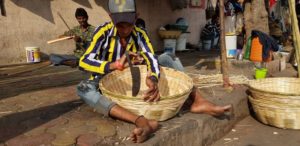
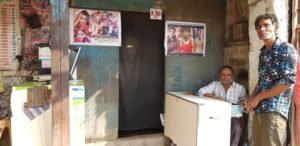
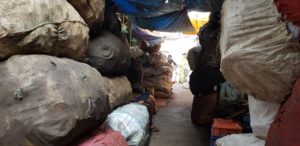
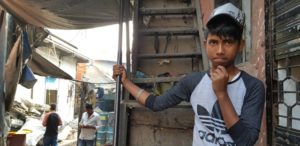
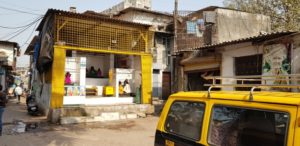
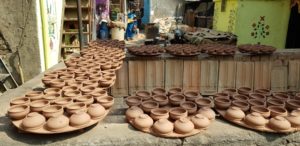










Nice blog, Very nice post this is, carry on
Wonderful post, Keep it up. Nice subject also
Thanks for sharing such valuable information.
Nobody does India like you do India. No judging, talking to all ages, all castes, all religions equally. And just as happy in the slum as the 5 star hotel. Stay in India and become one of the biggest vloggers ever and probably the most loved foreigner in India.
Most loved foreigner in India… hahaha. Guess I am that. Definitely a ‘foreigner’. Thank you for your lovely words!
Wonderful post, Keep it up. Nice subject also
We should not blame government all the time. Even if you give them flat, they will rent it and go back to slums. Just like a beggar in Mumbai won’t do a proper job cuz he earns more begging on the streets
I don’t think I am blaming the govt anywhere in my article. Rather about people choosing to stay here because of certain ‘proximities.’ As far as beggars go, its the same with beggars everywhere. Because of the kind of jobs they are equipped to do; how about training them first?
i love to see this place after reading this.thanks for such info.